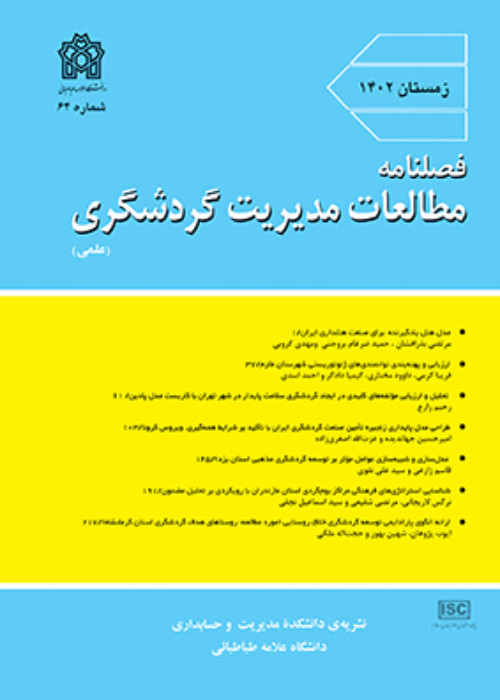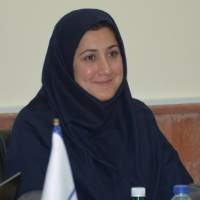Obstacles to the Beach Water Sports Tourism Development in Iran
In recent years, awareness of sustainable tourism has increased around the world. Many tourism industries combine sport to attract more customers to facilitate economic development and promote local culture (Yang et al., 2020). Sports tourism is becoming a huge and independent industry in the world. Beaches and sea-related areas with various purposes such as swimming, boating, diving, and other water activities and recreation are the main attractions in many parts. These attractions can attract both groups of tourists with a general tendency to look for rest and recreation and special tourists looking for activities such as fishing, diving, and jet skiing (Sanaei, 2017: 80). However, research has shown that the mere presence of strong attractions (attractive factors) to participate in an event does not guarantee attendance at that event; deterrents can affect the presence of the event more strongly (Hematinezhad, 2017: 85). Therefore, the researcher decided to study the obstacles and barriers to the development of water-beach sports tourism.
The method of the present study is mixed (qualitative-quantitative) and in the form of exploratory-consecutive mixed design. The statistical population of the research, in the qualitative field of professors in the field of sports science and tourism, experts in the field of tourism and cultural heritage, active tourism institutions and agencies, sports experts of the federation and water sports delegations and in the quantitative field of customers of Mazandaran coasts, Gilan, Hormozgan and Kish Island in the summer of 1396. the researcher-made questionnaire was designed based on the five-point Likert scale to collect information. The questionnaire was developed from two parts of demographic characteristics that included 8 questions, and the main part contained 31 questions and 4 variables. After that, to confirm the validity, the questionnaire was given to tourism and sports sciences professors. After confirming the validity, the questionnaire was distributed among beach customers. The number of samples according to the Morgan table in the statistical population was 384 people. (Hormozgan province and Kish island) was selected from the southern coast of the country. Questionnaires were randomly distributed among customers. Finally, 600 questionnaires were analyzed. A questionnaire was given to 10 professors of sports science and tourism professors who had at least one published article in sports tourism and related to the research topic and were experts in this field to assess the face and content validity of the research. For determining the internal reliability of the questions, Cronbach's alpha reliability technique was used. First, 50 questionnaires were distributed with Cronbach's alpha coefficient of 0.89, based on which the questions had acceptable reliability to test the collected information. The normality of the data was checked to analyze the information for each of the factors affecting the tourism of water-beach sports using skewness and elongation. After ensuring this, the identification of indicators related to each element was an exploratory factor analysis method. The structural equation method was used through SPSS and Amos software To estimate the research model.
The model fitting is suitable for extracting relationships between variables. All paths were statistically significant and had coefficients higher than 0.5. The factor burden of the components related to deterrents is the importance of the infrastructure dimension (1.07), socio-cultural dimension (1.00), economic dimension (1.00), and legal-political dimension (0.95), respectively. It can also be seen in Table (3) that all routes had a positive effect on inhibitory factors.
In examining the effect of items related to the deterrent factor in the development of water sports tourism, the results of the structural equation model showed that 4 variables with 31 items including 1) socio-cultural (6 items); 2) infrastructure (5 items); 3) Legislative and political (10 items); 4) Economical (6 items) that had an acceptable operating load, and items 7B, 8B, 9B, 13B, 15B in the Exploratory analysis agents with an operating load of less than 0.5 were eliminated. Among the variables of deterrents, the infrastructure dimension (1.07), socio-cultural dimension (1.00), economic dimension (1.00), and legal-political dimension (0.95) were more important, respectively.Socio-cultural barriers include destructive environmental effects for coastal areas, lack of attention to the passage of tourists' personal vehicles in the coastal zone, noise pollution due to the presence of tourists, lack of system Sewage from beachfront beaches, the lack of special places for women to enjoy water recreation, the lack of special family swimming areas and the creation of cultural problems caused by mixed swimming between men and women were mentioned. According to the research results, it is suggested that special places be considered for women to use water sports recreation. Also, serious violations should be dealt with the violators of the construction in the shores area, and monitoring should be done on the discharge of the sewage of the buildings around the sea to prevent the pollution of the seawater. For the well-being of tourists, special places should be considered for renting recreational and beach activities such as motorcycling, car riding, horse riding, cycling, etc. Findings of the study regarding the effect of the infrastructure component of deterrents in water sports tourism with the conclusions from Garavand et al. (2013) Lack of standard sports and recreational facilities, the most important obstacles of sports tourists. Veicy and Mehmandoost (2015) studies stated that underlying factors significantly affect the lack of tourism development in Iran. Mirzazadeh and Abdolmaleki (2016) stated that obstacles and problems of infrastructure and places have a significant role in developing sports tourism in Mashhad. Sanaei (2017) concluded that infrastructural barriers are one of the most important obstacles to the development of water sports. Therefore, the dimension of infrastructure as one of the main elements of obstacles with the highest factor load (1.07) in water sports tourism has been studied in the present study.Among the issues raised in the legal-political factor is the lack of a law on dealing with offenders in swimming areas, the lack of transparency of the main custodian of the seashores in the law, the mistreatment of police officers by tourists, the mistreatment of lifeguards With tourists, mistreatment of local communities with tourists, problems such as traffic, inflation, and environmental pollution caused by overcrowding, lack of security and tranquility of tourists on the beaches, lack of motivation and inability of officials to attract He pointed out the effectiveness of beach tourism, the seasonality of tourism in some coastal areas of the country, the lack of support from officials for investors and sports tourism projects. Given that security, tranquility, and tourism are directly related, tourists are looking for a place to enjoy and relax and get away from the worries of everyday life. Therefore, it requires the relevant bodies to have the necessary coordination on tourism and security. It is recommended that beaches be privatized for a long period of at least 5 years or more.Among the issues raised in the economic factor can be the lack of sustainable employment in all seasons in coastal areas, high prices and false price increases due to the presence of tourists, high prices compared to the quality of services provided to tourists, high costs of some Beach recreation such as diving, fishing, etc., lack of funding for advertising, media, and virtual advertising to introduce the country's beach recreational attractions worldwide, lack of funding for local information to present water sports facilities in coastal areas Cited. It is suggested that by providing facilities such as tax incentives, low-interest loans, and land privatization for the construction of hotels and restaurants, water parks and shopping malls, and other service industries, a step towards job creation. , Economic prosperity, and control over inflation levels of host communities be removed. Also, the financial benefits of hosting sports competitions and festivals should be directed to the use of the host communities. Provide the ground for cooperation and entry of natives to invest in this field. Because when the mutual benefit of indigenous peoples and tourists is considered, and indigenous peoples consider themselves beneficiaries, they are expected to make more efforts in its sustainable development. Budgets should be considered for advertising and introducing water-beach sports attractions.
- حق عضویت دریافتی صرف حمایت از نشریات عضو و نگهداری، تکمیل و توسعه مگیران میشود.
- پرداخت حق اشتراک و دانلود مقالات اجازه بازنشر آن در سایر رسانههای چاپی و دیجیتال را به کاربر نمیدهد.




